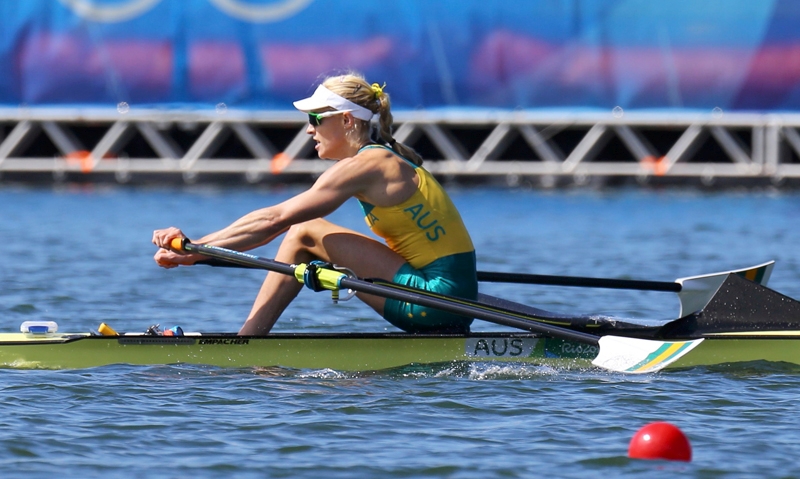Many exercise experts think so, because synchronising the contractions of the chest muscles involved in breathing with the chest muscles used to drive the oars through the water might improve a rower's efficiency of exercise and reduce overall oxygen requirements.
To see how much benefit might accrue from coordinated breathing, scientists at the Dartmouth Medical School in New Hampshire used videotapes, instructional classes, and practice sessions to teach 16 physically active male students how to row. The subjects then rowed at intensities of 50% V02max (65 per cent of maximal heart rate) and 75% V02max (84 per cent of max heart rate) while using three different breathing strategies: (1) Inhaling during drive and exhaling during recovery, (2) Exhaling during drive and inhaling during recovery, or (3) Spontaneous breathing (exhaling and inhaling at random). Oxygen consumption and ratings of perceived exertion were measured in each situation.
The rowers breathed more often and took shallower breaths when they used the spontaneous-breathing strategy, but there were no other differences between the three breathing methods. Most importantly, oxygen consumption and perceived effort were exactly the same with the three different approaches. In other words, 'entraining' breathing with muscular activity during rowing doesn't seem to produce any advantages in efficiency or feeling of effort.
In contrast, research has suggested that cyclists who coordinate their breathing with their downward pushing on the pedals do indeed exercise more economically. It's not clear why entrained breathing doesn't benefit rowers, although it's possible that months or even years of training might be required before synchronised breathing would produce any physiological bonuses.
('Does Entrained Breathing Improve the Economy of Rowing?' Medicine and Science in Sports and Exercise, vol. 26(5), pp. 610-614,1994)










